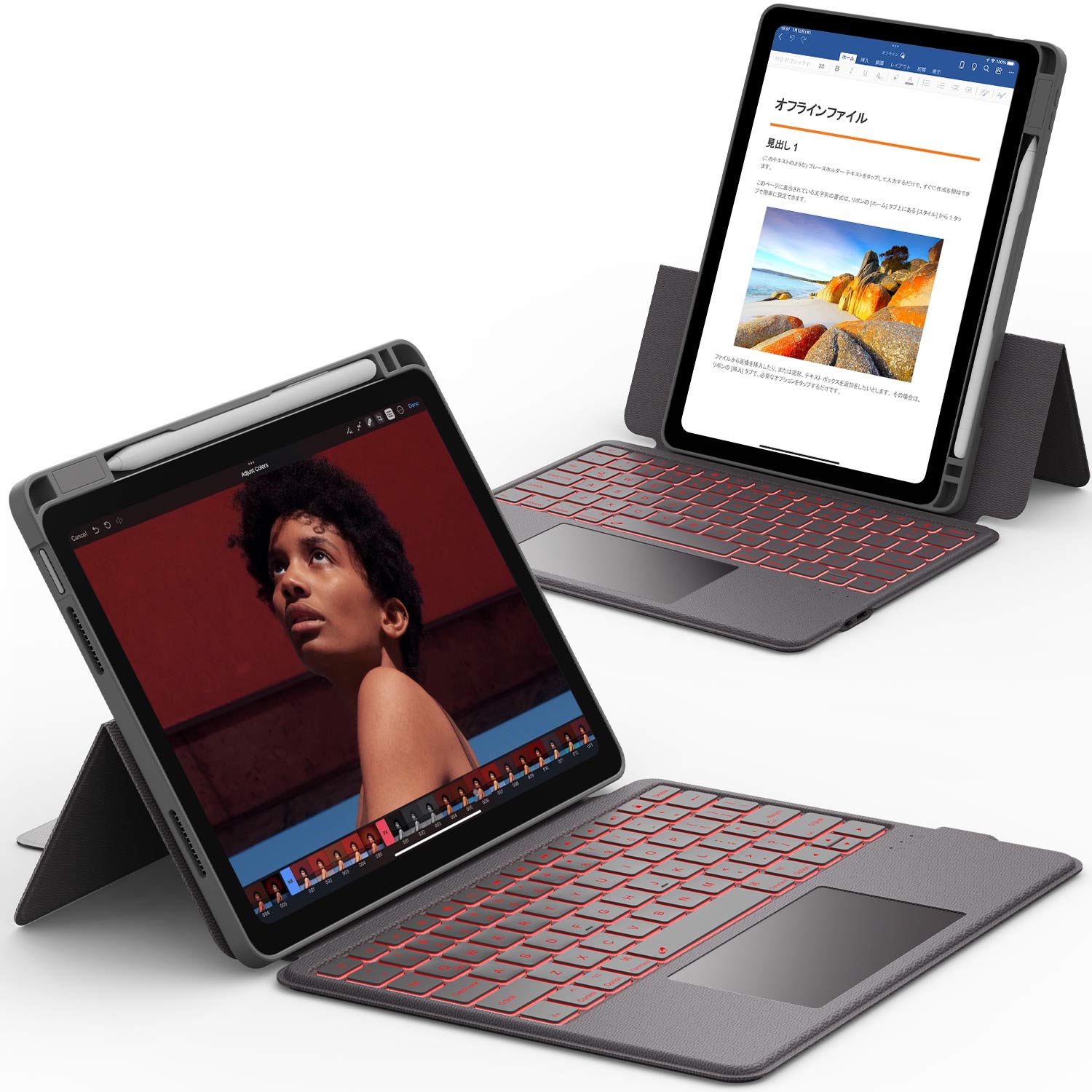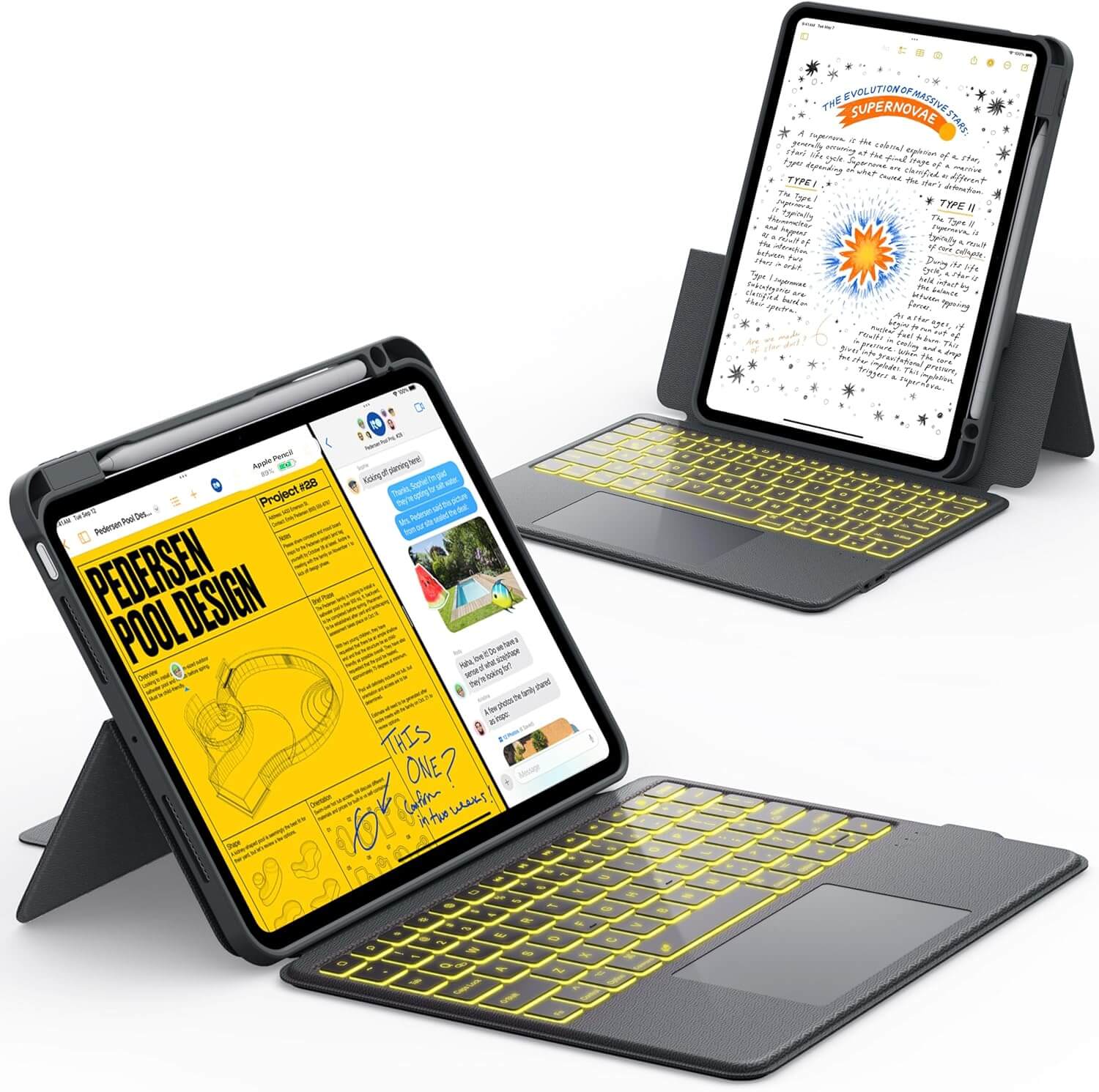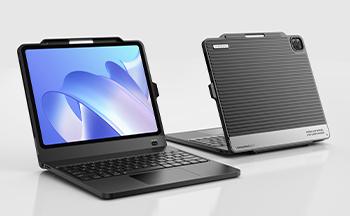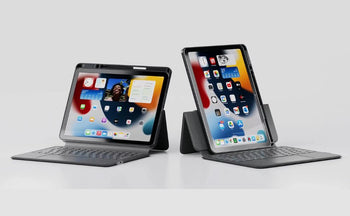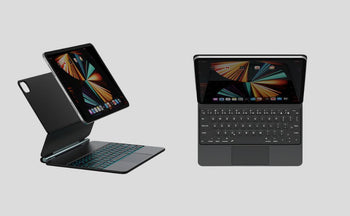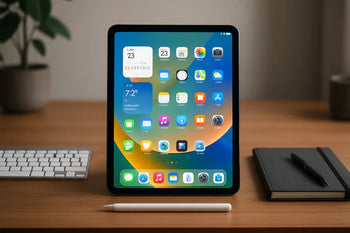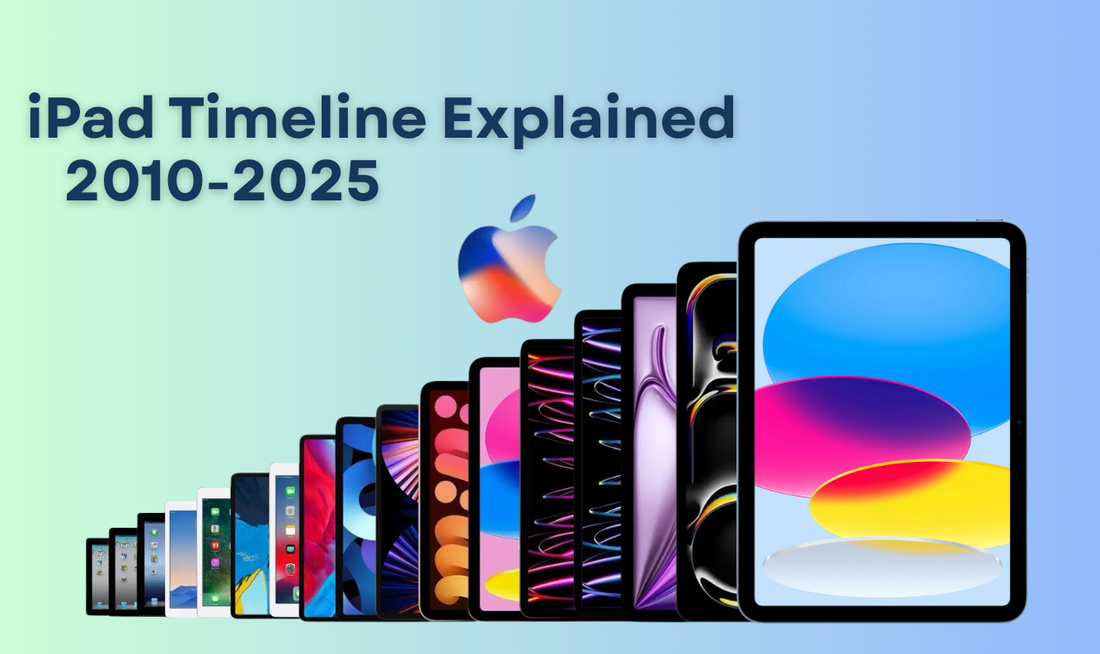Since 2010, Apple has released many versions of the iPad, each one adding new features and designs.
What started as a basic Apple tablet for browsing and media has grown into a full lineup for work, school, and creative projects.
The iPad timeline shows how each generation has shaped the way people use tablets today.
Over the years, the iPad has gained faster chips, new display sizes, Apple Pencil support, and its own iPadOS software.
With so many updates, it can be hard to remember when each model came out or what made it stand out.
This guide walks through the iPad timeline year by year, compares models by category, and explains how iPadOS has changed along the way.
Quick Insights 💡:
- 2010: Original iPad introduced by Steve Jobs
- 2011–2013: iPad 2, 3, 4 + first iPad mini
- 2015: iPad Pro lineup launched with Apple Pencil
- 2019: iPadOS introduced, separating from iOS
- 2020–2025: iPad Air redesign, M1/M2/M3 chips, OLED iPad Pro
- Current lineup: iPad (10th gen), iPad mini (6th gen), iPad Air (M2/M3), iPad Pro (M2/M3)
iPad Timeline Release in Order
|
iPad 1st Generation |
April 3, 2010 |
|
|
iPad 2 |
March 11, 2011 |
|
|
iPad 3rd Generation |
March 16, 2012 |
|
|
iPad 4th Generation |
November 2, 2012 |
|
|
iPad Mini 1 (1st Generation) |
November 2, 2012 |
|
|
iPad Air (1st Generation) |
November 1, 2013 |
|
|
iPad Mini 2 |
November 12, 2013 |
|
|
iPad Air 2 (2nd Generation) |
October 22, 2014 |
|
|
iPad Mini 3 |
October 22, 2014 |
|
|
iPad Mini 4 |
September 9, 2015 |
|
|
iPad Pro (1st Generation) |
November 11, 2015 |
|
|
iPad (5th Generation) |
March 24, 2017 |
|
|
iPad Pro (2nd Generation) |
June 13, 2017 |
|
|
iPad (6th Generation) |
March 27, 2018 |
|
|
iPad Pro (3rd Generation) |
November 7, 2018 |
|
|
iPad Mini (5th Generation) |
March 18, 2019 |
|
|
iPad Air (3rd Generation) |
March 18, 2019 |
|
|
iPad (7th Generation) |
September 25, 2019 |
|
|
iPad Pro (4th Generation) |
March 25, 2020 |
|
|
September 18, 2020 |
|
|
|
iPad Air (4th Generation) |
October 23, 2020 |
|
|
iPad Pro (5th Generation) |
May 21, 2021 |
|
|
iPad (9th Generation) |
September 24, 2021 |
|
|
iPad Mini (6th Generation) |
September 24, 2021 |
|
|
March 18, 2022 |
|
|
|
October 26, 2022 |
|
|
|
October 26, 2022 |
|
|
|
iPad Air (6th Generation) |
May 15, 2024 |
|
|
iPad Pro (7th Generation) |
May 15, 2024 |
|
|
iPad Mini (7th Generation) |
October 23, 2024 |
|
|
iPad (11 Generation) |
March 4, 2025 |
|
|
iPad Air (7th Generation) |
March 12, 2025 |
|
The iPad Timeline – Year by Year
Apple’s iPad has evolved steadily with new designs, more powerful chips, and enhanced software features.
Each step added something that shaped how people use tablets for work, school, and entertainment.
2010 – The Original iPad
Apple introduced the first iPad in March 2010. Steve Jobs presented it as a device that fit between a phone and a laptop.
The iPad featured a 9.7-inch display, ran iOS, and was available in Wi-Fi and Wi-Fi + 3G versions. It used the A4 chip, the same processor as the iPhone 4.
At launch, it focused on browsing, media, and apps from the App Store. It did not have cameras, which made it different from later models.
2011–2013 – iPad 2, 3, 4, and iPad mini
In 2011, Apple released the iPad 2, which was thinner, lighter, and faster. It added front and rear cameras for FaceTime and photos.
The iPad 3 arrived in 2012 with the first Retina display, offering much sharper text and images. Later that same year, Apple introduced the iPad 4 with the Lightning connector and a faster A6X chip.
Also in 2012, the first iPad mini launched with a 7.9-inch screen. It gave users a smaller and more portable option.
2014–2015 – iPad Air & iPad Pro Arrive
The iPad Air, introduced in 2013, and its 2014 update were much thinner and lighter than earlier models. They kept the same 9.7-inch size but were easier to hold and carry.
In 2015, Apple released the first iPad Pro. It had a 12.9-inch display, a more powerful A9X chip, and support for the Apple Pencil. This was the first iPad aimed at creative and professional users.
The Pro also supported the Smart Keyboard, making it closer to a laptop replacement.
2016–2018 – Performance Boosts
Apple expanded the iPad Pro line with new sizes. The 9.7-inch iPad Pro came in 2016, followed by the 10.5-inch and second-generation 12.9-inch models in 2017.
In 2018, Apple redesigned the iPad Pro with 11-inch and 12.9-inch edge-to-edge displays. These models removed the Home button and added Face ID for security.
They also introduced USB-C instead of Lightning, making them more flexible with accessories.
2019 – iPadOS Launch
In 2019, Apple created iPadOS, a new system separate from iOS. This gave the iPad software features designed for larger screens.
Key updates included:
- Split View and Slide Over multitasking
- Support for external drives
- A desktop-like Safari browser
This change made the iPad feel more like a laptop alternative rather than just a large iPhone.
2020–2022 – M1 Chip Era
In 2021, Apple brought the M1 chip from the Mac to the iPad Pro. This gave the tablet desktop-class performance with much faster graphics and processing.
The iPad Air also gained the M1 in 2022, making even the mid-range model very powerful.
Apple also launched the Magic Keyboard with trackpad support. This accessory made the iPad more useful for typing and productivity.
2023–2025 – OLED Displays & M3 Chips
By 2023, Apple started moving the iPad Pro to OLED displays, which offered better contrast and color. These models also received the M3 chip in 2024, improving speed and efficiency.
The iPad Air was redesigned with slimmer bezels and improved performance. Apple also updated accessories like the Apple Pencil for lower latency and more precision.
By 2025, the iPad lineup centered around high-end Pro models with OLED, mid-range Air models with strong performance, and the iPad mini as the compact option.
iPad Models by Category
Apple has released several types of iPads over the years, each designed for different needs. Some focus on affordability, others on portability, while certain models aim to deliver high performance for demanding tasks.
iPad (Standard)
The standard iPad is the most affordable option in the lineup. It is often used in schools, homes, and workplaces where basic tasks like browsing, streaming, and note-taking are the priority.
Apple has updated this model regularly with larger screens, better cameras, and faster processors, while keeping the price lower than other iPads. It usually supports the first-generation Apple Pencil and a simple keyboard accessory.
Key points:
- Target users: Students, families, and casual users
- Strengths: Low cost, simple design, reliable performance
- Limitations: Fewer advanced features, older accessories compared to newer models
iPad mini
The iPad mini is the smallest iPad, designed for people who want a compact device. It has a screen size around 8 inches, making it easy to carry in a bag or even hold with one hand.
Despite its size, the iPad mini often includes the same processors found in larger models, so it runs apps quickly. The most recent versions support the second-generation Apple Pencil, which makes it popular for reading, sketching, and quick note-taking.
Key points:
- Target users: Travelers, readers, and people who prefer smaller devices
- Strengths: Light and portable, powerful for its size
- Limitations: Smaller screen is not ideal for multitasking or long work sessions
iPad Air
The iPad Air offers a balance between the standard iPad and the iPad Pro. It is thinner and lighter than the standard iPad but still includes strong performance and modern features.
Recent iPad Air models use advanced chips, support the second-generation Apple Pencil, and work with Apple’s Magic Keyboard. The display is larger than the iPad mini and has slim bezels, making it a good choice for both work and entertainment.
Key points:
- Target users: Students, professionals, and general users who want more power than the standard iPad
- Strengths: Lightweight, strong performance, works with modern accessories
- Limitations: Lacks some of the advanced display and camera features of the Pro
iPad Pro
The iPad Pro is the most powerful iPad, built for professionals and creative users. It comes in larger screen sizes, including 11-inch and 13-inch models, and features high-quality displays with smooth refresh rates.
It supports advanced accessories like the Apple Pencil (2nd generation) and Magic Keyboard. The iPad Pro uses Apple’s top chips, making it capable of handling video editing, design apps, and multitasking with ease.
Key points:
- Target users: Designers, video editors, and professionals who need desktop-level performance
- Strengths: Best display, fastest processors, advanced accessory support
- Limitations: High price, features may be more than casual users need
iPadOS Evolution
Apple introduced iPadOS in 2019 to give the iPad its own system, separate from iOS. The first version, iPadOS 13, focused on multitasking and added a desktop-like version of Safari. This made the iPad feel more capable for work and study.
From 2020 to 2022, Apple refined the experience with updates that improved the Apple Pencil and handwriting support.
Features like Scribble let users write in any text field. Universal Control also arrived, letting people move a cursor across a Mac and iPad with one keyboard and mouse.
Between 2023 and 2025, iPadOS gained tools for advanced workflows. Stage Manager gave users a way to organize apps in overlapping windows. External monitor support allowed the iPad to extend its display, not just mirror it. Apple also began adding AI-powered features to help with writing, editing, and productivity.
Key milestones in iPadOS evolution:
- 2019, iPadOS 13: Multitasking, desktop Safari
- 2020–2022: Apple Pencil upgrades, Scribble, Universal Control
- 2023–2025: Stage Manager, external monitor support, AI tools
By 2025, iPadOS had shifted to a yearly naming system, with the latest release called iPadOS 26. This change matched the calendar year and simplified version tracking.
Visit Here To Check Your iPad Model.
Conclusion
From its debut in 2010 to today’s M3-powered models, the iPad timeline shows how Apple has constantly evolved the device into a versatile tool for professionals, students, and casual users alike.
Whether you want raw power in the iPad Pro or everyday value in the standard iPad, knowing the full timeline helps you make the right choice.
Always keep in mind:
- iPads have evolved into multiple categories (mini, Air, Pro, standard)
- iPadOS gave tablets more independence and features
-
2025 lineup focuses on performance, OLED displays, and AI-ready features
👉 Explore the latest iPad accessories from Chesona to upgrade your experience:
FAQs About the iPad Timeline
Apple has released many iPad models since 2010, each with different sizes, features, and accessories. The devices follow a steady release pattern and support tools like the Apple Pencil and iPadOS that expand what they can do.
How many iPads are there in total?
As of 2025, Apple has released over 30 main iPad models across different product lines. These include the standard iPad, iPad mini, iPad Air, and iPad Pro. Each line has gone through multiple generations.
When did the first iPad come out?
The first iPad was released on April 3, 2010. It introduced a larger touchscreen device designed for browsing, media, and apps, bridging the gap between the iPhone and MacBook.
How often does Apple release a new iPad?
Apple typically updates at least one iPad line each year. The release schedule is not always the same, but most years see new models announced in the spring or fall.
What's the difference between iPad, iPad Air, and iPad Pro?
The standard iPad is the entry-level model with core features at a lower price. The iPad Air offers a thinner design and stronger performance. The iPad Pro is the most advanced, with larger displays, faster processors, and features like Face ID and ProMotion.
Which iPad models support Apple Pencil?
The 1st generation Apple Pencil works with older iPad models, including several iPad, iPad mini, and iPad Air versions. The 2nd generation Apple Pencil works with newer iPad Pro models, recent iPad Air models, and the iPad mini (6th generation).
When did iPadOS launch?
Apple launched iPadOS on September 24, 2019. It separated the iPad’s software from iOS, adding features like improved multitasking, desktop-class browsing, and better support for accessories.
